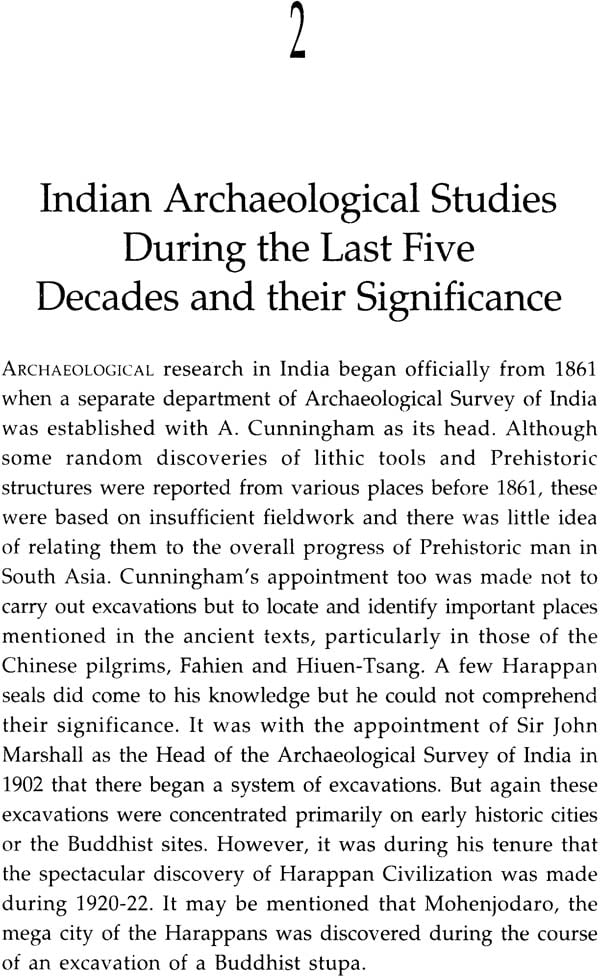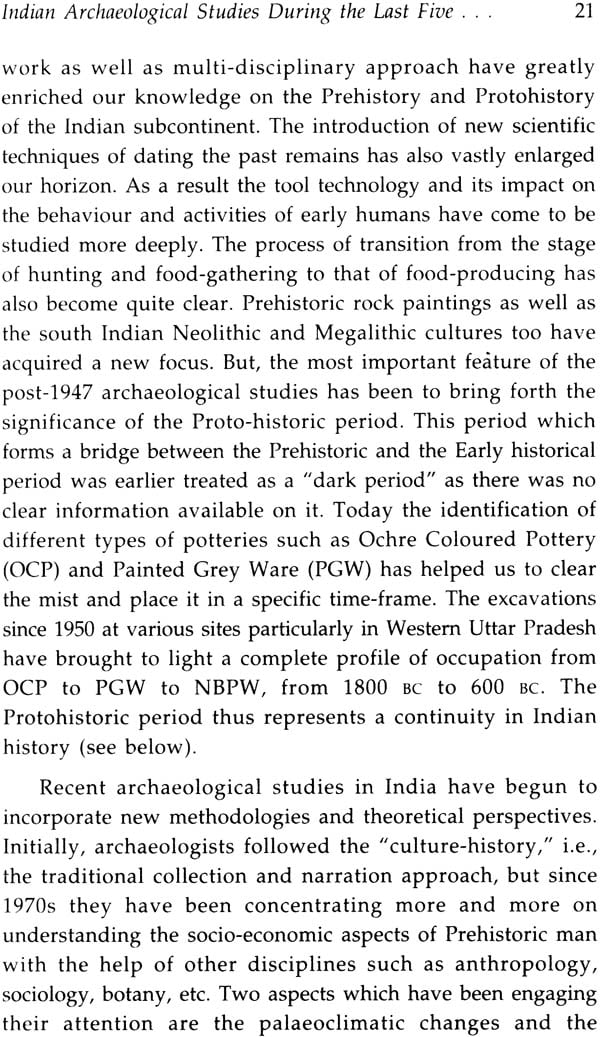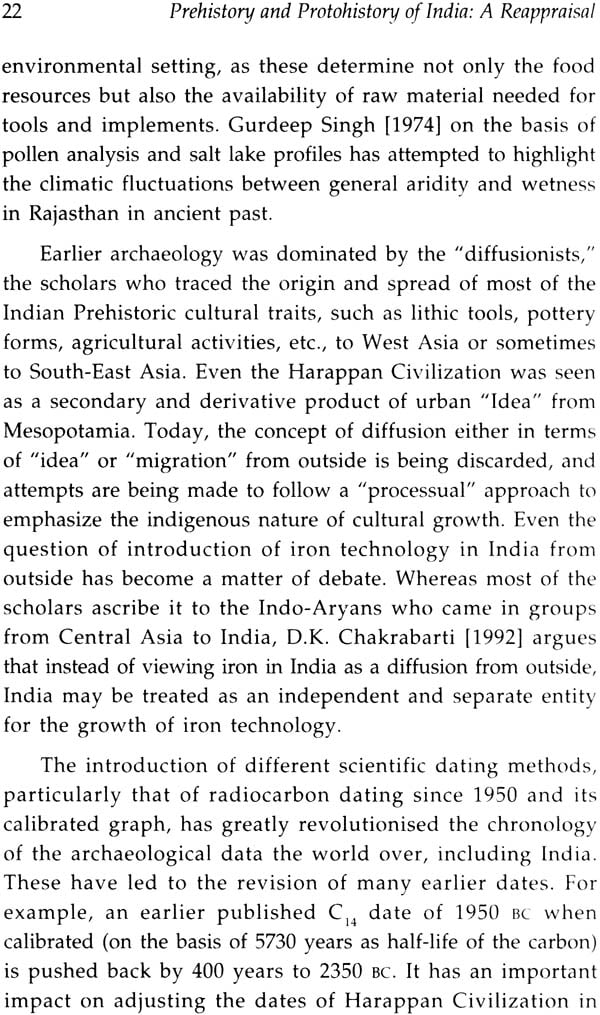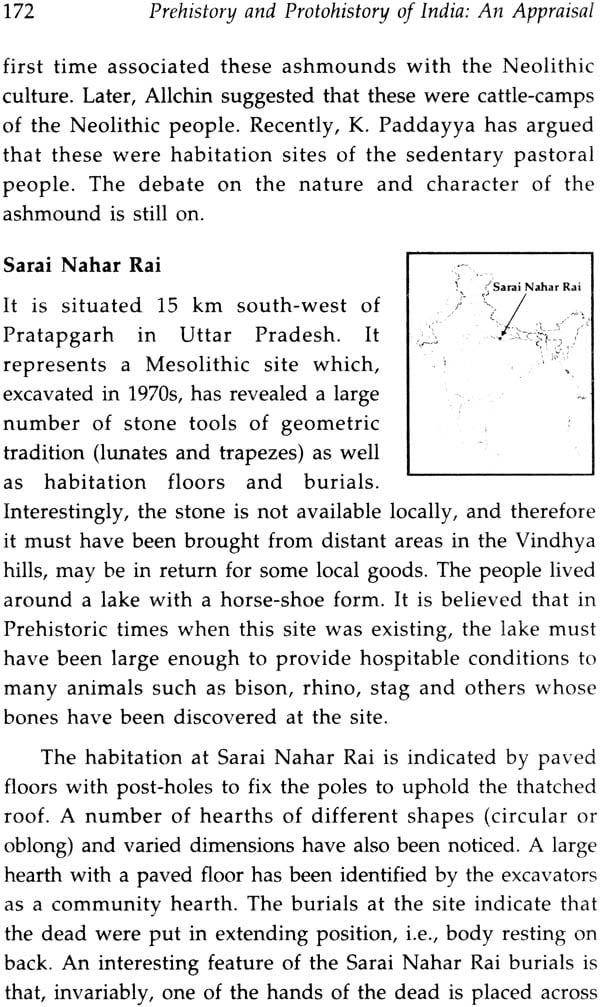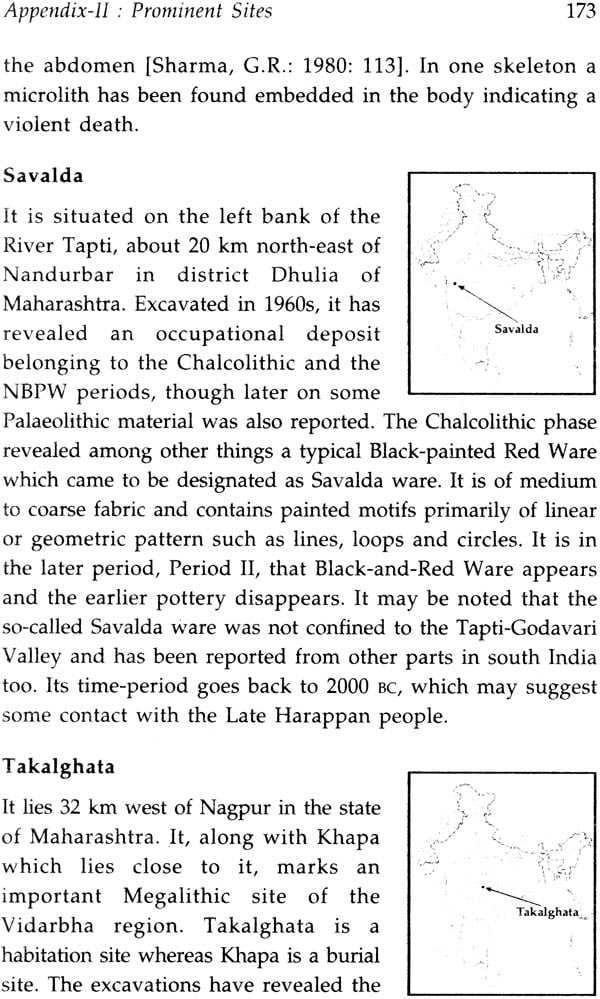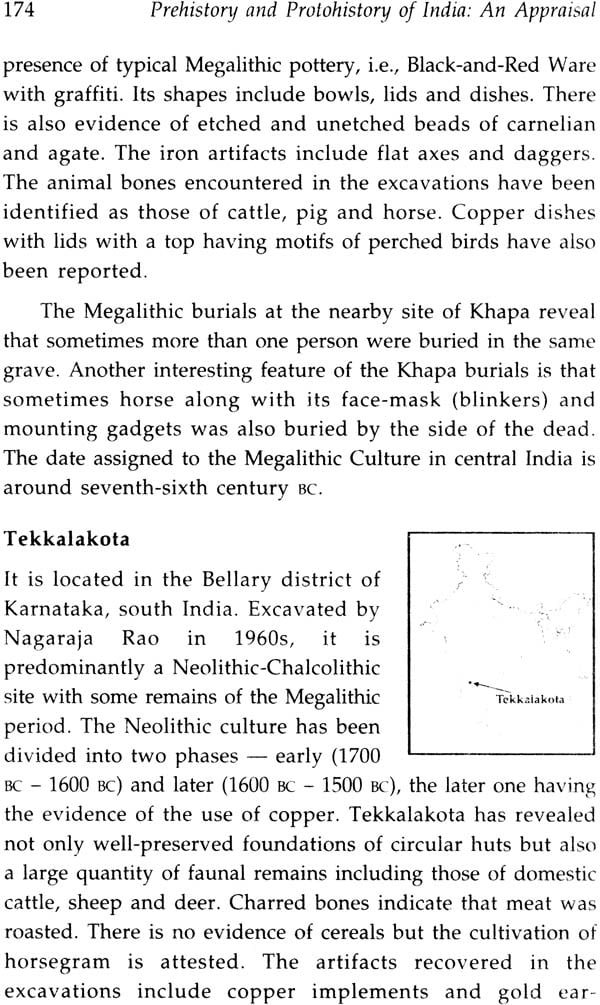
Prehistory and Protohistory of India-An India (Palaeolithic-Non-Harappan Chalcolithic Cultures)
Book Specification
| Item Code: | IDL191 |
| Author: | V.K. Jain |
| Publisher: | D. K. Printworld Pvt. Ltd. |
| Language: | English |
| Edition: | 2009 |
| ISBN: | 9788124603734 |
| Pages: | 213 |
| Cover: | Paperback |
| Other Details | 8.5" X 5.2" |
| Weight | 260 gm |
Book Description
Fresh excavations new dating techniques and ever growing conceptual frameworks framework since 1950 have greatly reshaped our perspective on prehistory and Protohistory of the Indian subcontinent. This monograph which is primarily aimed to serve as a starter for the under-graduate and post-graduate students presents in a concise but comprehensive manner a syncretic view of the latest information on various aspects such as tools and technologies settlement and subsistence patterns, ecological background and distributional configuration in respect of the stone Age and the Chalcolithic Cultures outside the Harappan Zone. The Megalithic cultures of peninsular India and the Deccan too find a place in the book. A glossary of the terms used frequently in archaeology as well as maps, line drawings and explanatory notes in individual sites add further value to the text.
Dr. V.K. Jain teaches history at Motilal Nehru Collage university of Delhi. His two other books include Trade and Traders in Western India, New Delhi 1990 and Cities and sites of ancient and Early Medieval India-A Historical Profile, New Delhi, 1998.
Much work has been done in the field of Indian archaeology during the last fifty years or so as is evident from the large number explorations and excavations that have been undertaken during this period and form the vast amount of literature that has been generated by archaeologists. Although many excavation reports have remained unpublished scholars have made good use of whatever material is available in print and have deepened our understanding of India’s past. The information and interpretation contained in the archaeological literature however have yet to find their due place in the textbooks and become accessible to teachers as well as students. The present work by Dr. V.K. Jain is a commendable effort in this direction.
An inspiring teacher of long standing and a dedicated researcher, Dr. V.K. jain has painstakingly rummaged through the entire relevant literature and ahs ably tried and fashionable approach he ahs dealt with controversial issues in a highly detached manner and had presented a comprehensive view of the latest information on tools and technologies, subsistence patterns and distribution and ecological background of settlements during the period form the Palaeolithic to the non-Harappan Chalcolithic. The appendix on the megalithic cultures of central India and the Deccan the line drawings of tools, of central India and the explanatory notes on important archaeological sites accompanied by maps are some of the Important features of the book which make it extremely useful for the readers. I am sure the students as well as teachers will find Dr. Jain’s book Protohistory and will eagerly wait for the publication of its companion volume on the Harappan culture.
Fresh excavation new darting techniques and ever-growing conceptual frameworks during the last half-a-century have greatly reshaped our perspective in Prehistoric and protohistoric past of the Indian subcontinent. But still most of those by D.K. Chakrabarti, F.R. Allchin, D.P. Agarwal, K. paddayya and a few others continue to follow the traditional “culture-history” paradigm or collection and narration approach rather than focus on the cultural process of change and continuity. Since 1950, the pace of research has increased manifold and there is today enough data to portray more or less a clear and connected picture of India’s cultural growth in the remote past and to justify the argument that there is nothing static about Indian society which as any other has been growing with time and space.
This monograph is and attempt to present in a concise but comprehensive manner a syncretic view of the latest information on tools and technologies, settlement-subsistence pattern distributional framework and ecological background etc. in respect of prehistory and Protohistory of India. It covers a canvas extending from the Palaeolithic to the non-Harappan Chalcolithic cultures and leaves out the Harappan Civilization for the subsequent volume. It begins with an enquiry into the definition of prehistory and Protohistory and goes on to refer to the significance of latest dating technique and theoretical perspectives in archaeology. Chapter II reviews the contribution which Indian archaeological studies since 1950 have made to our knowledge. In the subsequent chapters the salient features of Palaeolithic, Mesolithic, Neolithic and non-Harappan Chalcolithic cultures have been highlighted. The chief elements or the iron-using megalithic cultures of peninsular India and the Deccan (c. 1000bc -300bc), the archaeological excavation, have been discussed in the appendix which also includes a glossary of important terms frequently used in archaeological as well as the explanatory notes on prominent sits mentioned in the text.
The book is and enlarged version of the chapters initially intended for inclusion in an advanced level text-book by a multi-scholar team and therefore, it naturally has a inquisitive enough to know more about India’s remotest past may also find it beneficial. The biggest difficulty in writing a text of this nature lies in deciding what to include and what to exclude. And for this I have taken the liberty of using my academic experience and discretion because in a subject which is so full of details and unresolved issues and controversies it is just not possible to do justice to each and every fact or interpretation. It has been my endeavour to drew a generality and confine more to highlighting the important features of cultural growth. Archaeological jargons have been fully explained in the text or in the glossary at the end. For the purpose of conveying the visual interpretation line-drawings illustrations and maps have been included, wherever required. For a reader who is stimulated enough to know more, a select bibliography is appended to the text.
Some repetition and errors of facts or spellings may no doubt remain. The author will be delighted to receive from anyone the suggestion for correction or improvements.
I shall like to place on record my gratitude to all those scholars whose contribution have been utilized fruitfully in writing this book.
I also wish to gratefully acknowledge the support and encouragement that I received form Prof. B.P. Sahu, Head, Department of history, Delhi University and Prof. R.C. Thakran also of the Delhi University. I an thankful to many of my friends and well wishers at the national Museum, the Archaeological Survey of India and the Motilal Nehru collage for their help in many ways. My thanks are due to Shri D.P. Sharma, in- Charge Prehistory Section at the National Museum, Delhi for readily helping with the books, articles and suggestions whenever needed. I am grateful to Dr. Nagarch, formerly Director of the Archaeological Survey of India, for going through the proofs and making valuable comments.
I am thankful to the library staff of the Archaeological Survey of India and the national Museum particularly Shri Bhagwan Chaube, for providing me with all possible assistance in procuring the material necessary for writing the book.
I am highly indebted of Prof. D.N. Jha, a scholar of international repute and the General President of the Indian History Congress (66th session, Santiniketan), who in spite of a very busy schedule and numerous obligations has been kind enough to oblige me with a foreword for this book.
I shall like to record my great sense of appreciation for the personal interest which Shri Susheel Mittal of the D.K. Printworld (P) Ltd. Bringing about the book in a record time.
Last but not least my thanks go to my wife Dr. Krishna Jain and my son Siddharth for supporting me all through this take of preparing the manuscript with love, patience and good humour.
I take the privilege of dedication the book as a token of regard and gratitude to Prof. R.S. Sharma who has throughout been devoted to the task of promoting secular and scientific approach in Indological studies. As the founder-Chariman of the Indian Council of historical Research, New Delhi he was instrumental in giving a positive direction to historical studies whereas at the university of Delhi where he was a professor and the Head of the department of history in 1970s, he has generated among students a new sense of enthusiasm and encouragement for research in various aspects of social and economic history. Those of us who have been associated with him either as a students or a researcher can never forget his kindness grace and commitment to the subject.
| Foreword | VII | |
| Preface | IX | |
| List of Maps and Figures | XVII | |
| 1 | Introduction | 1 |
| What is Prehistory | 1 | |
| Environmental Factors | 4 | |
| Human Evolution and Indian Prehistory | 5 | |
| Scientific Dating and related Techniques | 9 | |
| New Theoretical Perspectives | 14 | |
| 2 | Indian Archarological Studies During the Last Five Decades and their Significance | 19 |
| 3 | Palaeolithic Cultures | 39 |
| Introduction | 39 | |
| Chronology | 40 | |
| Tools and Technologies | 41 | |
| Spread and Distribution of Palaeolithic Sites | 49 | |
| Settlement and subsistence Pattern | 52 | |
| Conclusion | 55 | |
| 4 | Mesolithic Cultures | 57 |
| Introduction | 57 | |
| Salient Features | 57 | |
| Regional Distribution | 60 | |
| Tools and Technologies | 63 | |
| Material Culture and Subsistence Pattern | 65 | |
| Conclusion | 67 | |
| Rock Art | 68 | |
| 5 | Neolithic Cultures | 75 |
| Introduction | 75 | |
| Characteristic Features | 76 | |
| Chronological and Distributional Pattern | 77 | |
| North west India | 80 | |
| Northern India | 84 | |
| Central India | 86 | |
| Mid Gangetic Region | 89 | |
| Eastern India | 91 | |
| Southern Neolithic Cultures | 92 | |
| Conclusion | 96 | |
| 6 | Non-Harappan Chalcolithic Cultures | |
| Introduction | 99 | |
| Cultures Outside the Harappan Zone | 100 | |
| Settlement System | 106 | |
| Subsistence Pattern | 108 | |
| Tools and Technologies | 109 | |
| trade Contacts | 110 | |
| Religious Beliefs and Practices | 111 | |
| Conclusion | 112 | |
| Copper Hoard Cultures | 113 | |
| Appendices | 119 | |
| Appendices I: Megalithic Cultures (Peninsular India and the Deccan c. 1000 bc-300 bc) | ||
| Introduction | 119 | |
| Distribution of the Megalithic Monuments and their Structural Forms | 120 | |
| Chronology | 124 | |
| Material Culture | 124 | |
| Subsistence Economy | 127 | |
| Conclusion | 129 | |
| Appendix II: Prominent Sites | 133 | |
| Adamgarh, 133-Adichnallur, 134- Ahar, 135- Anagwadi, 136, Baghor, 137- Bagor, 137- Belo Valley, 138- Bhimbetka, 139- Brahmagiri, 141- Budihal, 143- Burzahom, 143-Chirand, 145- Chopani-mando, 146-Damdama, 147- Daojali Hading, 147-Didwana, 148-Gilund, 148-Gufkral, 149-Hallur, 150 Hunsgi, 150-Inamgaon, 151- Jakhera, 153-Jodhpura, 153-jorwe, 154-Kayatha, 155-Koldihwa, 156- Kuchai, 157- Kupgal or Kupgallu, 157- Langhnaj, 158- Mahadaha, 159- Mahagara, 160- Mahurijhari, 161- Maski, 162 – Navadatoli, 165 – Nevasa , 166- Noh, 167 Paisra, 168- Paiyampalli, 168- Pandu Rajar Dhibi, 169 –Piklihal, 170-Sanaganakallu, 171- Sarai Nahar Rai 172- Savalda, 173-Takalghata, 173- Tekkalakota, 174-Utnur, 175- Watgal, 175 | ||
| Glossary | 177 | |
| Bibliography and References | 199 | |
| Index | 207 |
